York was the capital of the Roman province of Britannia Inferior, a Viking stronghold, a powerbase of King Richard III and for centuries the ecclesiastical centre of northern England, with a church-to-tavern ratio more typical of a papal province than a city in Britain’s beer belt. It is by no means a typical railway town, in the fashion of Swindon or Crewe. It might nevertheless be the pre-eminent such place in the country.
The city was not the first place in Britain to have a train service – the world’s oldest railway line, which opened two hundred years ago, runs between Stockton and Darlington, 50 miles north (a series of events along the length of the route have been taking place to mark the anniversary, including a ceremonial journey made by a newly restored replica of the original train in late September). But York, situated midway between London and Edinburgh, rapidly became a pivot of the burgeoning railways. In the 1840s, the Yorkshire entrepreneur George Hudson declared that he would ‘make all the railways come to York’. He was as good as his word.
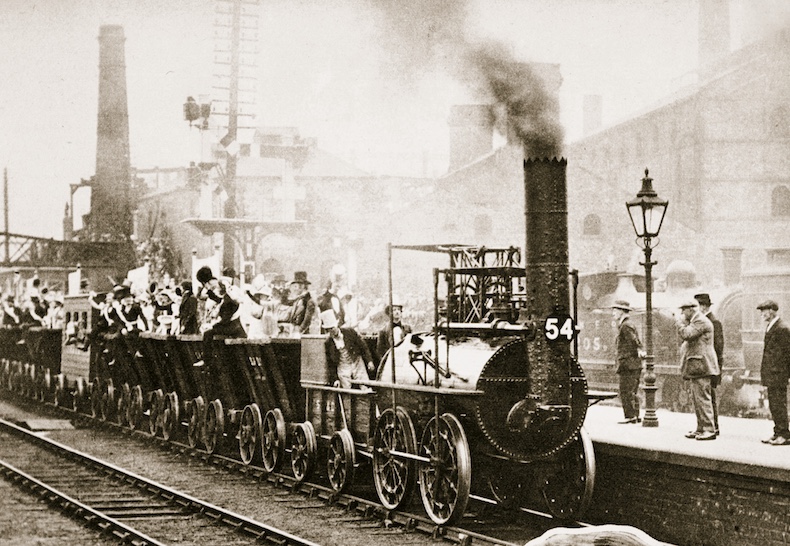
Today, as in Hudson’s time, trains belonging to a constellation of companies converge on the city and peel away to every corner of the country. The station, with its soaring curved roof, matches York’s famous cathedral in audacity. On the city streets, railway uniforms outnumber centurion helmets to an almost alarming degree. West of the station, a huge new residential development is taking shape on land once crowded with railway workshops, foundries, mess rooms, weighing houses and marshalling yards. Excavators working at the site have found porcelain created for the North Eastern Railway company intermingled with Roman pottery.
The National Railway Museum sits at the edge of this development, surrounded by earthworks, fences and diggers. Newly reopened after a major restoration, its Station Hall was once an integral part of this railway conurbation. In its refreshed state, it will house the museum’s collection of royal carriages and other significant exhibits.
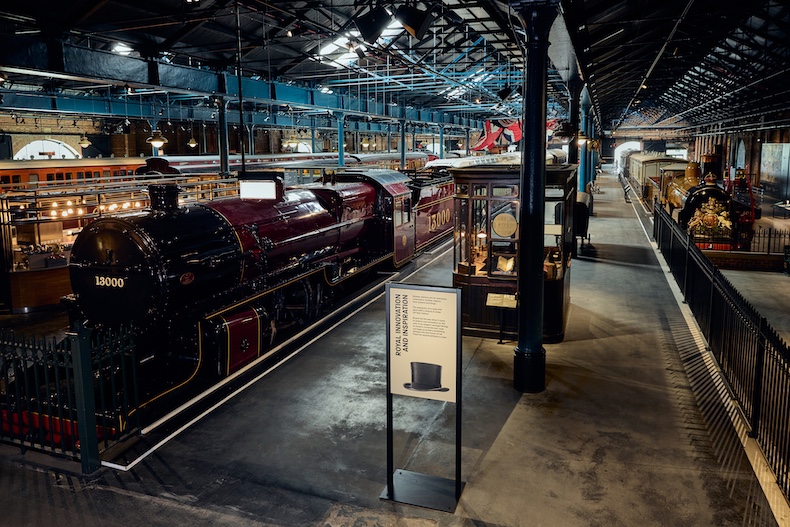
Built in the 1870s, Station Hall served for a century as a goods depot. From its platforms, local produce was loaded onto trains shooting off in all directions, while stock arriving from other parts of the country and overseas was unpacked and driven off to market. Hints of its original purpose are provided by two exhibits: an insulated fish van fitted with roller bearings for high-speed running so that seafood could arrive fresh at its destination, and a banana van capable of channelling the steam from a locomotive to hasten the ripening of the fruit inside.
In the first decades of its life, Station Hall must have presented the visitor with an unspeakable stench, as well as chaotic juxtapositions of old and new: goods of bewildering variety brought by coal-guzzling automata being unloaded onto horse-drawn carts – a piece of technology that had been around for millennia. Today, the only smell is the savour of fresh paint emanating from the columns, finished in British Rail teal, supporting the newly glazed roof. Once you’ve got your head round the incongruity of a vast distribution centre playing host to a collection of royal vehicles, the juxtapositions are rather less startling too, though Queen Victoria might not be amused to find her saloon car hitched to a locomotive bearing the name of William Gladstone.
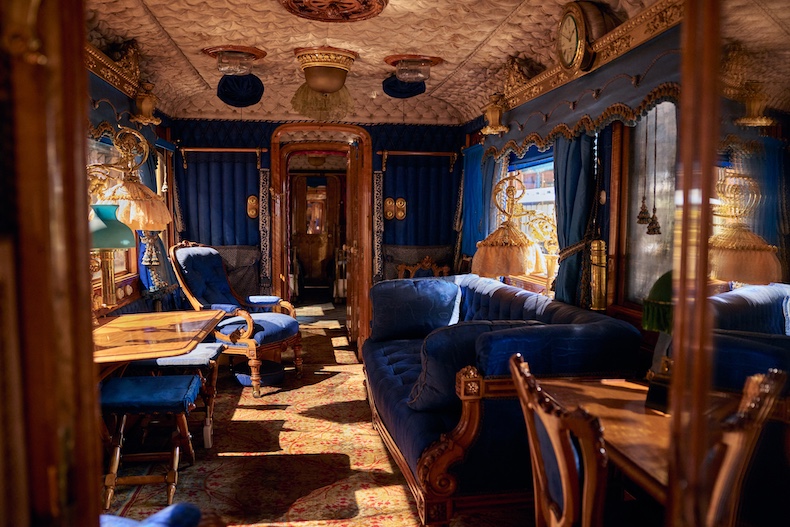
The museum’s collection includes a massive range of items, from historical locomotives like Rocket and Mallard to examples of every item of railway paraphernalia you can think of – timetables, ticket machines, signals, railwaymen’s caps, ashtrays and chamber pots. Most of the trains are displayed in the museum’s Great Hall and can only be viewed from track level. Many of the smaller exhibits have been crammed into glass cases in the adjoining North Shed with semi-legible labels hanging from them.
In Station Hall, the standard of display is of another order. The platforms of the goods depot have been rebuilt, so the interiors of the royal carriages – all sumptuously refurbished – are at eye height. The earliest, built for Queen Adelaide in the 1830s, is little more than a road coach mounted on bogies. Later examples look much more comfortable, though ordinary citizens can view them only from the outside. Edward VII’s saloon is fitted with electric fans and radiators. The carriage used by Queen Mary is decorated with inlaid panelling and plump Georgian-style armchairs, while the frosted windows of the bathroom are etched with the badges of the chivalric orders, perhaps as a rebuke to anyone ungallant enough to try to catch a glimpse of a queen at her toilette. With its large wireless and moveable modern furniture, the carriage of Queen Elizabeth, wife of George VI, looks like it could host a dance. Next to Queen Victoria’s saloon is a cabinet containing the recently rediscovered wreath of immortelles that was attached to the front of the locomotive that bore the monarch’s coffin from Paddington to Windsor in 1901, the flowers living up to their name.
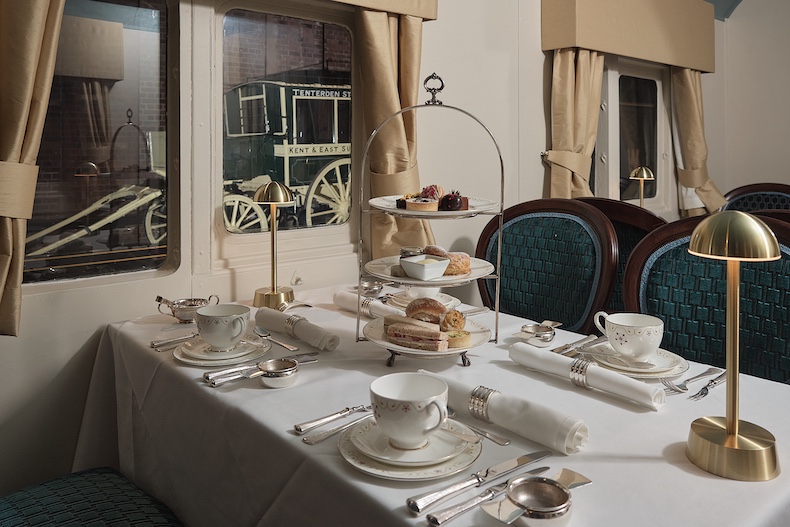
With their early embrace of trains, the royal family helped popularise rail travel, and other items in Station Hall offer a suitably demotic note. Positioned along the platforms is an excellent array of passenger amenities, including a WH Smith newsstand recovered from Waterloo station and a curvaceous cast-iron urinal stall with Arts & Crafts-style patterns created in the late 19th century, when passengers wanting to relieve themselves would have to jump off a train at a stop and complete their business before it set off again. The attempt to capture the passenger experience in all its forms is carried over into other displays. An assemblage of buffet-related items, for instance, includes a silver-plated coffee percolator made in the 1840s in the form of a locomotive and a Maxpax plastic tea cup dispensed by British Rail in the 1980s. The endless variety served up by the railway is captured best of all in Terence Cuneo’s painting Waterloo Station (1967), which hangs near the entrance. Here, steam engines alternate with electric trains, passengers jostle for position with parcels and pigeons share the concourse with Harold Wilson and Charles de Gaulle.
The last royal railcars will be taken out of service in 2027. As fine as these carriages will look among their predecessors in Station Hall, their retirement will sever a link with the early days of rail so richly commemorated in this atmospheric space.
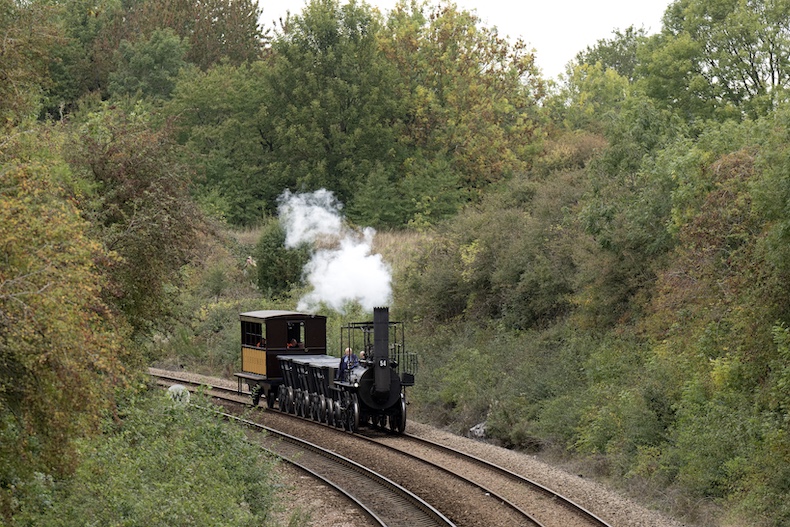
Station Hall, at the National Railway Museum, York, is now open to visitors. Grand Central connects York to London and Sunderland six times a day.